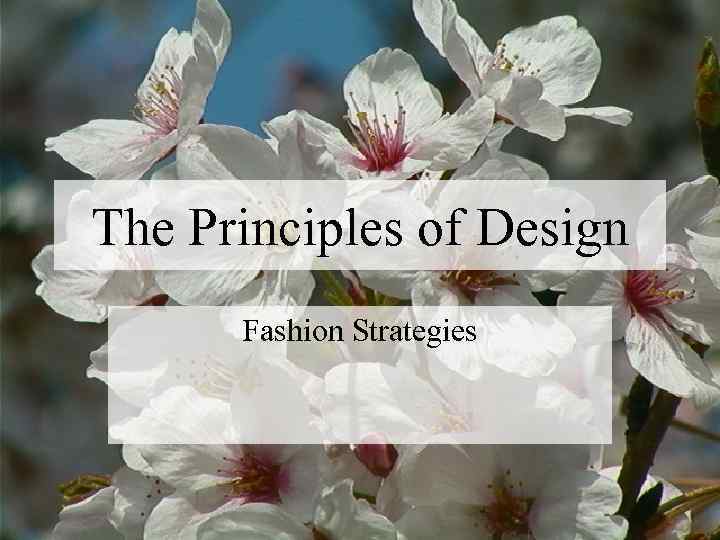 The Principles of Design Fashion Strategies
The Principles of Design Fashion Strategies
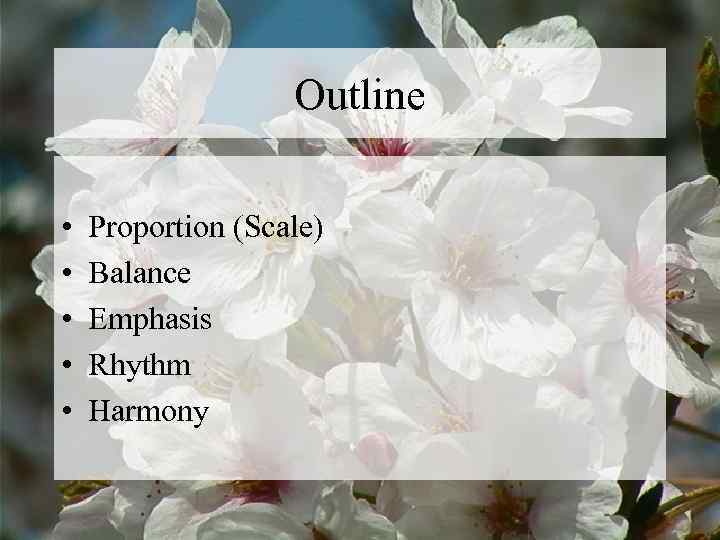 Outline • Proportion (Scale) • Balance • Emphasis • Rhythm • Harmony
Outline • Proportion (Scale) • Balance • Emphasis • Rhythm • Harmony
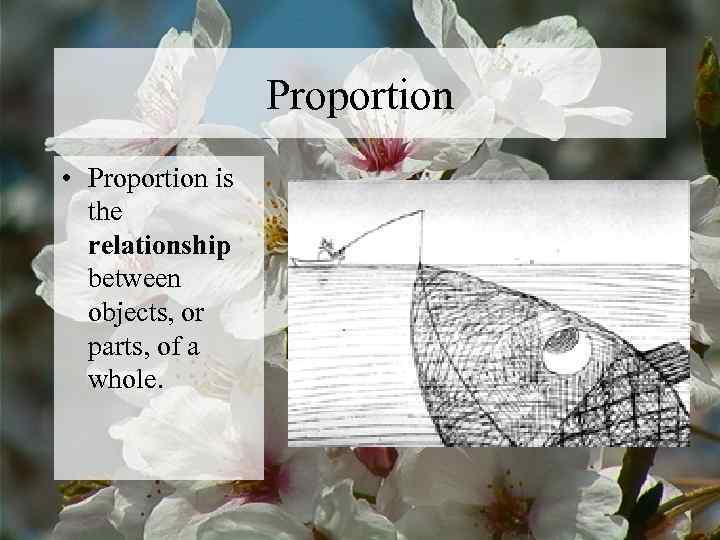 Proportion • Proportion is the relationship between objects, or parts, of a whole.
Proportion • Proportion is the relationship between objects, or parts, of a whole.
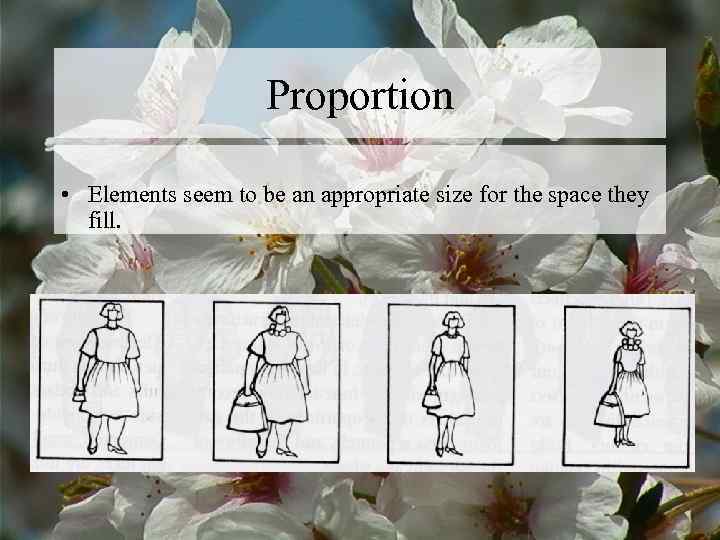 Proportion • Elements seem to be an appropriate size for the space they fill.
Proportion • Elements seem to be an appropriate size for the space they fill.
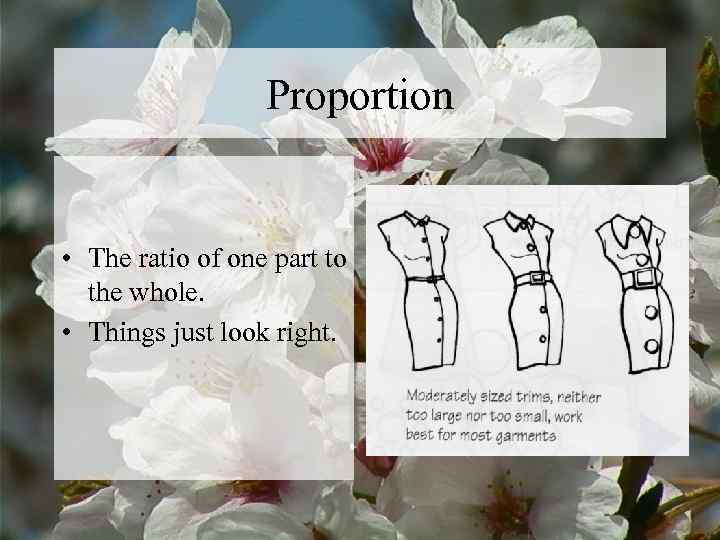 Proportion • The ratio of one part to the whole. • Things just look right.
Proportion • The ratio of one part to the whole. • Things just look right.
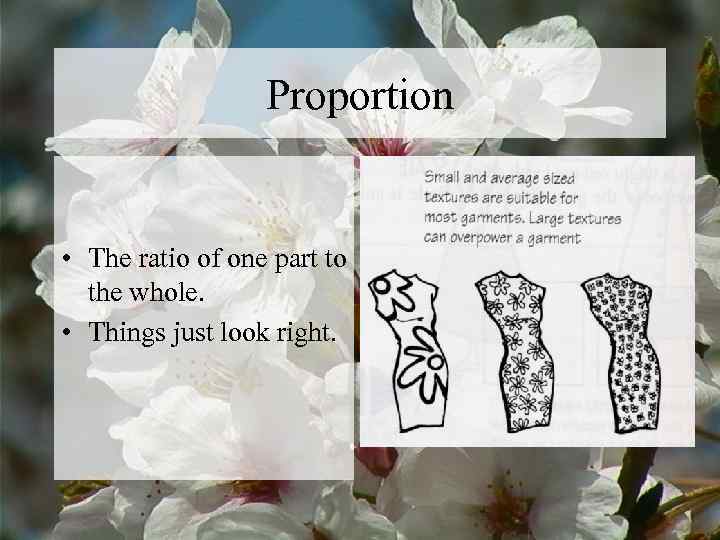 Proportion • The ratio of one part to the whole. • Things just look right.
Proportion • The ratio of one part to the whole. • Things just look right.
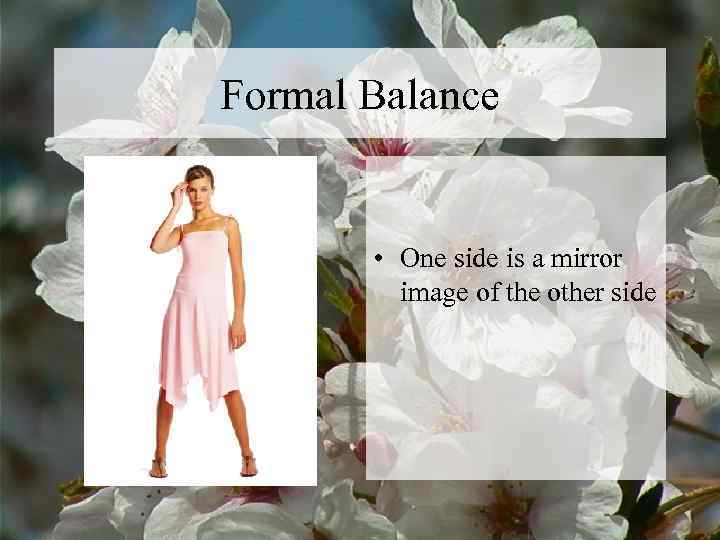 Formal Balance • One side is a mirror image of the other side
Formal Balance • One side is a mirror image of the other side
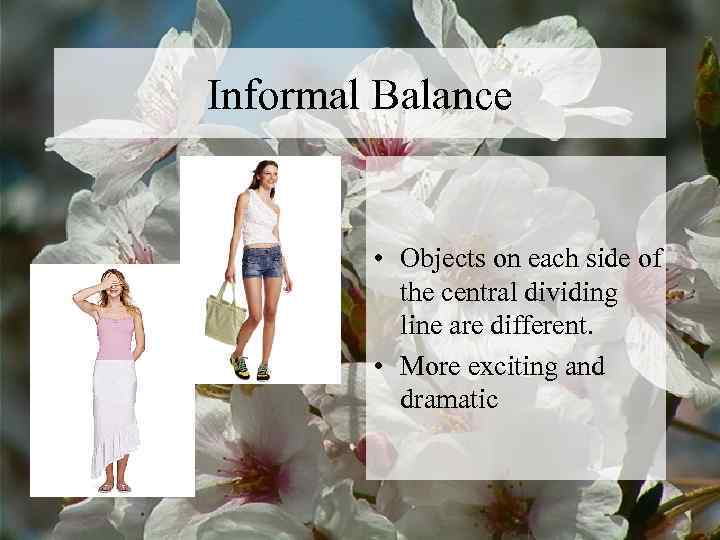 Informal Balance • Objects on each side of the central dividing line are different. • More exciting and dramatic
Informal Balance • Objects on each side of the central dividing line are different. • More exciting and dramatic
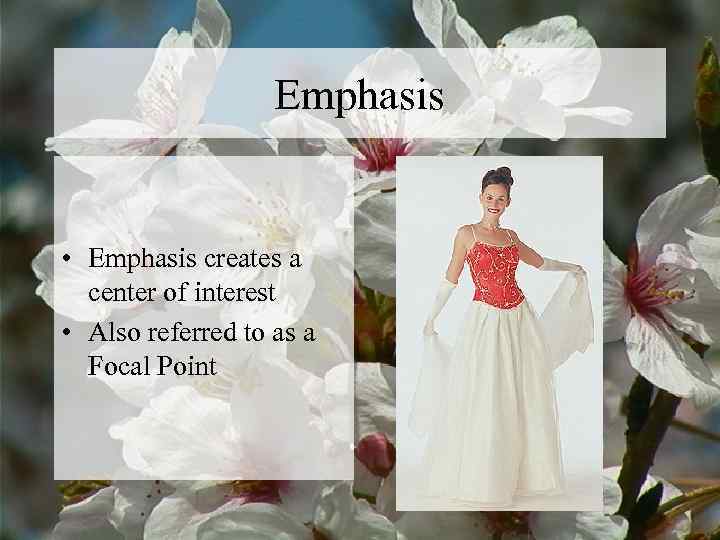 Emphasis • Emphasis creates a center of interest • Also referred to as a Focal Point
Emphasis • Emphasis creates a center of interest • Also referred to as a Focal Point
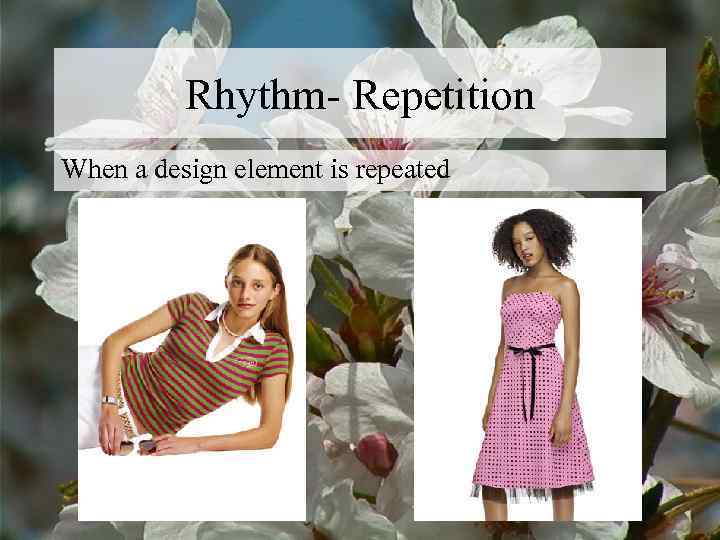 Rhythm- Repetition When a design element is repeated
Rhythm- Repetition When a design element is repeated
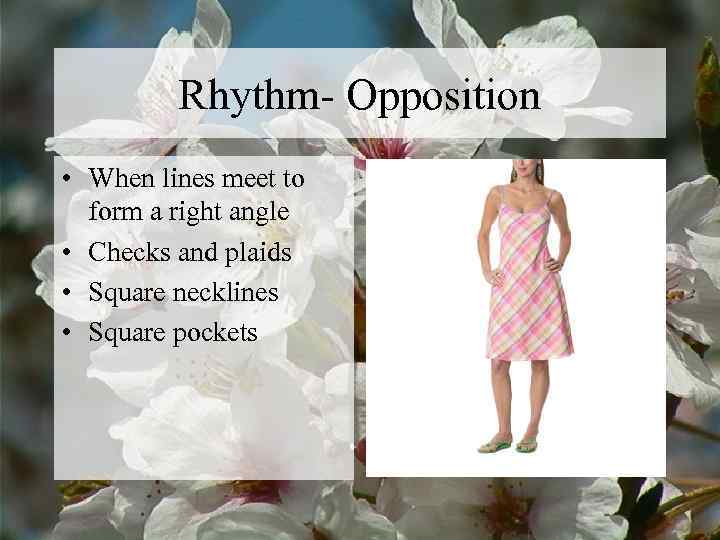 Rhythm- Opposition • When lines meet to form a right angle • Checks and plaids • Square necklines • Square pockets
Rhythm- Opposition • When lines meet to form a right angle • Checks and plaids • Square necklines • Square pockets
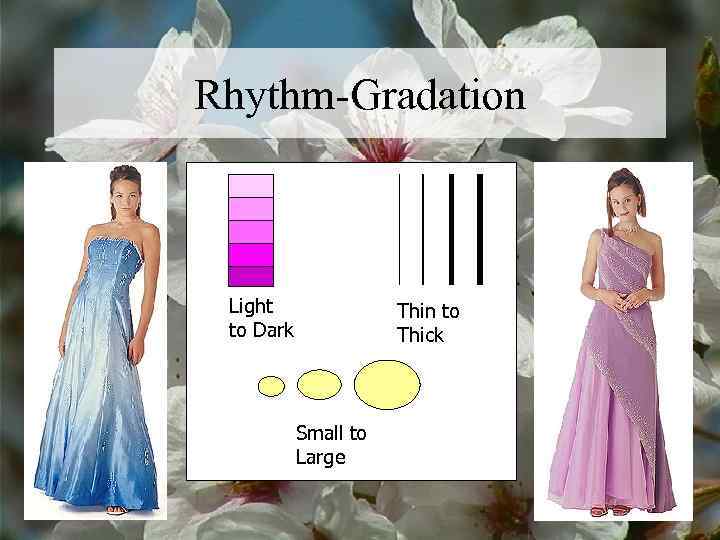 Rhythm-Gradation Light Thin to to Dark Thick Small to Large
Rhythm-Gradation Light Thin to to Dark Thick Small to Large
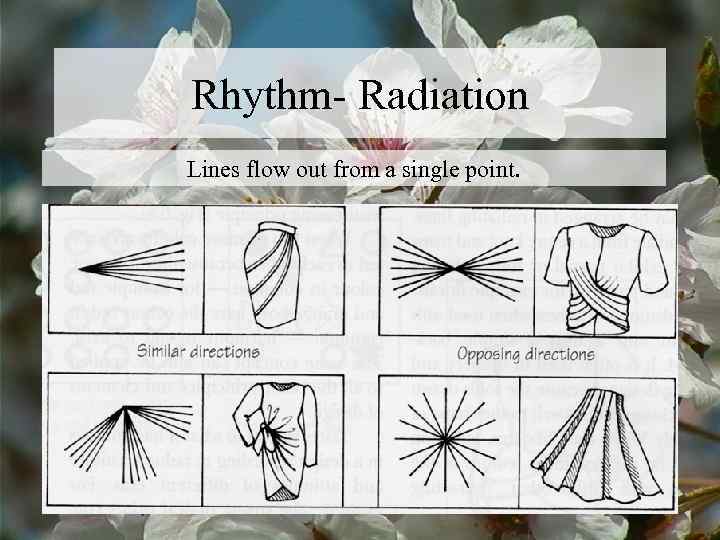 Rhythm- Radiation Lines flow out from a single point.
Rhythm- Radiation Lines flow out from a single point.
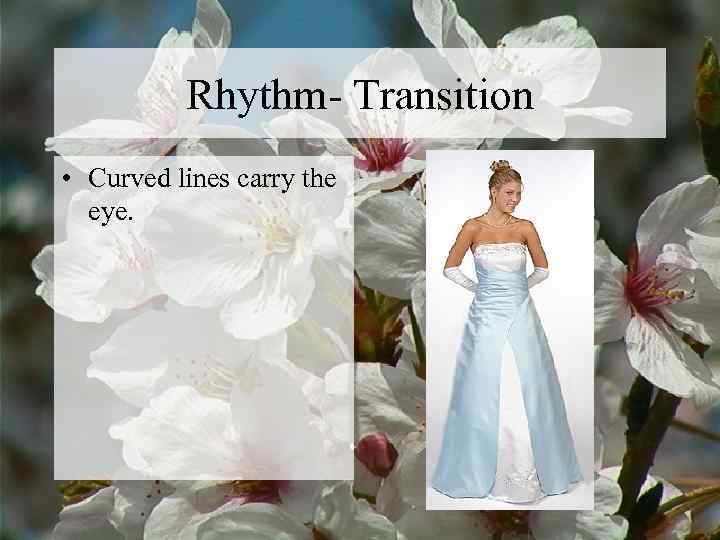 Rhythm- Transition • Curved lines carry the eye.
Rhythm- Transition • Curved lines carry the eye.
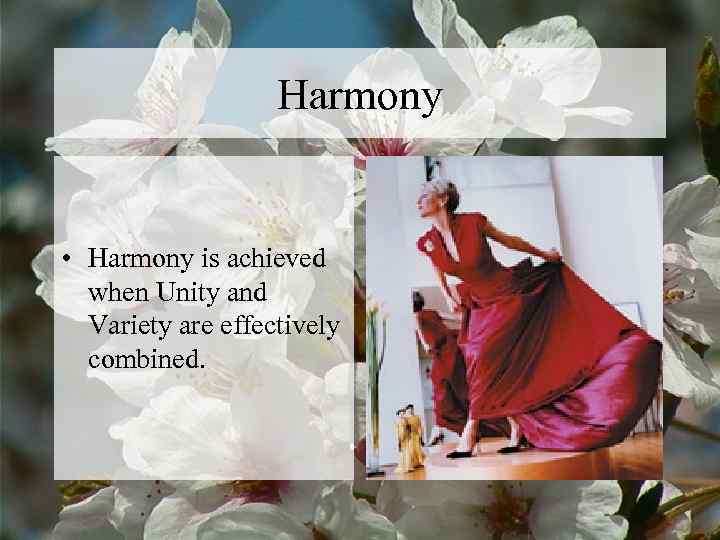 Harmony • Harmony is achieved when Unity and Variety are effectively combined.
Harmony • Harmony is achieved when Unity and Variety are effectively combined.
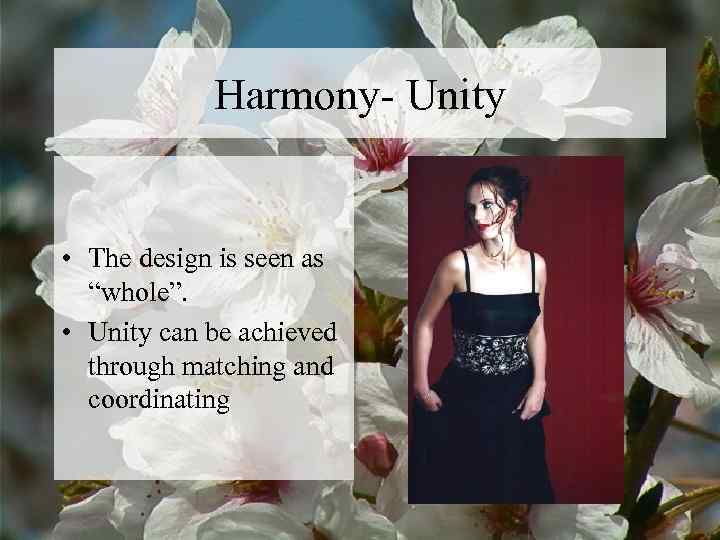 Harmony- Unity • The design is seen as “whole”. • Unity can be achieved through matching and coordinating
Harmony- Unity • The design is seen as “whole”. • Unity can be achieved through matching and coordinating
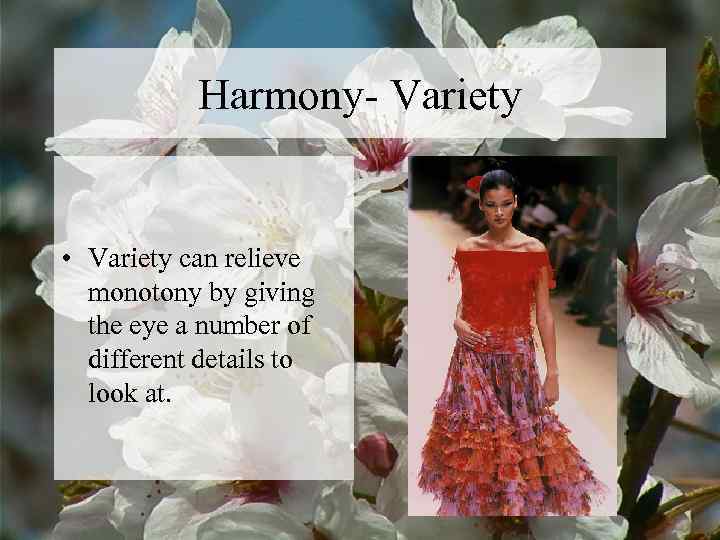 Harmony- Variety • Variety can relieve monotony by giving the eye a number of different details to look at.
Harmony- Variety • Variety can relieve monotony by giving the eye a number of different details to look at.
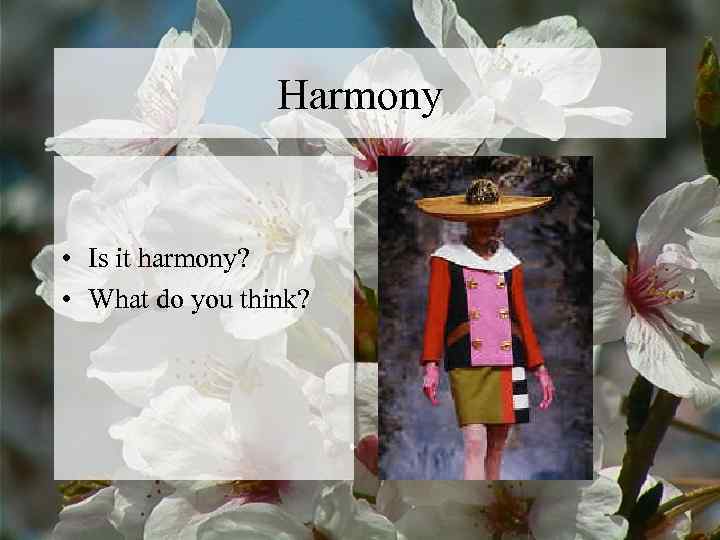 Harmony • Is it harmony? • What do you think?
Harmony • Is it harmony? • What do you think?
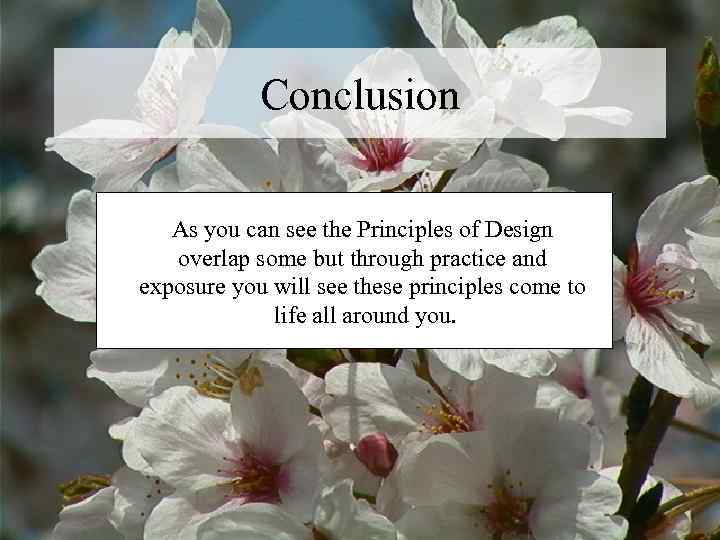 Conclusion As you can see the Principles of Design overlap some but through practice and exposure you will see these principles come to life all around you.
Conclusion As you can see the Principles of Design overlap some but through practice and exposure you will see these principles come to life all around you.





































